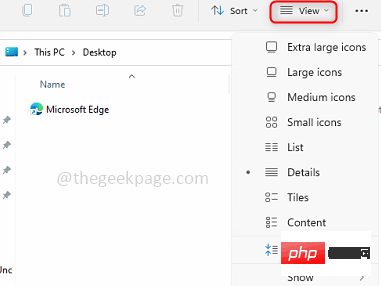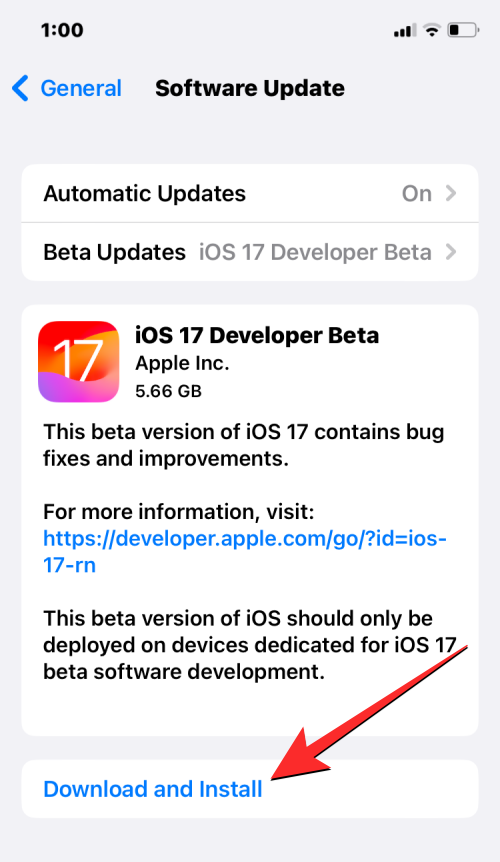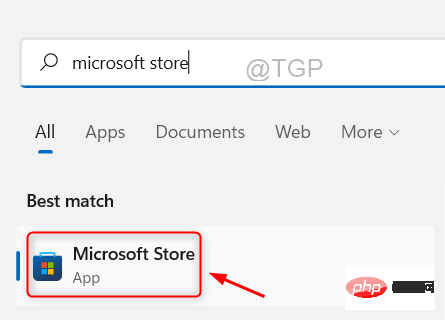
Analysis of the key points of HTTP status code setting, specific code examples are required
In the process of web development, it is very important to master the setting of HTTP status code. HTTP status code is a kind of information returned to the client when the web server responds to the request. It uses three digits to represent different statuses. This article will analyze the key points of setting HTTP status codes and provide some specific code examples to help developers better understand and apply HTTP status codes.
1. Classification of HTTP status codes
HTTP status codes are divided into five categories, which are used in different scenarios:
- 1xx (Informational): indicates The server has received the client's request, but needs further processing or waiting.
- 2xx (Success): Indicates that the server successfully processed the client's request and returned the corresponding content.
- 3xx (Redirection): Indicates that the client needs to perform further operations to complete the request.
- 4xx (Client Error): Indicates that the request sent by the client has an error and the server cannot process it.
- 5xx (Server Error): Indicates that an error occurred while the server was processing the request.
2. Key points for setting HTTP status codes
-
Common 2xx status codes
- 200 OK: Indicates successful processing by the server The request was made and the corresponding content was returned. This is the most common status code and is typically used in normal request responses.
- 201 Created: Indicates that the server successfully processed the request and created a new resource. Typically used in POST requests that create resources.
- 204 No Content: Indicates that the server successfully processed the request but did not return any content. Typically used for requests that do not require content to be returned.
-
Common 3xx status codes
- 301 Moved Permanently: Indicates that the requested resource has been permanently moved to a new URL. The search engine updates its index, redirecting the old URL to the new one.
- 302 Found: Indicates that the requested resource has been temporarily moved to a new URL. The search engine does not update its index but redirects the old URL to the new URL.
- 304 Not Modified: Indicates that the client's cached resources are still valid and the cached resources can be used directly without requesting the server again.
-
Common 4xx status codes
- 400 Bad Request: Indicates that the request sent by the client has a syntax error and the server cannot understand it.
- 401 Unauthorized: Indicates that the request requires user authentication, but the user did not provide valid authentication information.
- 403 Forbidden: Indicates that the server refuses to execute the request and does not have permission to access the requested resource.
- 404 Not Found: Indicates that the requested resource does not exist.
-
Common 5xx status codes
- 500 Internal Server Error: Indicates that an unknown error occurred while the server was processing the request.
- 502 Bad Gateway: Indicates that the server, acting as a gateway or proxy server, received an invalid response.
- 503 Service Unavailable: Indicates that the server is currently unable to process the request, possibly due to overload or maintenance.
3. Specific code examples
The following are specific code examples of some common HTTP status codes to help developers better understand and apply HTTP status codes setting.
- Return 200 OK status code example:
from flask import Flask, jsonify
app = Flask(__name__)
@app.route('/')
def index():
return jsonify({'message': 'Hello World'}), 200
if __name__ == '__main__':
app.run()- Return 301 Moved Permanently status code example:
from flask import Flask, redirect
app = Flask(__name__)
@app.route('/old-url')
def old_url():
return redirect('/new-url', code=301)
@app.route('/new-url')
def new_url():
return 'This is the new URL'
if __name__ == '__main__':
app.run()The above is only Some common HTTP status code setting examples, developers can choose the corresponding status code to set according to their own needs.
Summary
This article analyzes the key points of setting HTTP status codes and provides some specific code examples. Mastering the settings of HTTP status codes is very important for web development, which can help developers better handle and respond to client requests. I hope the content of this article will be helpful to readers and bring some benefits.
The above is the detailed content of Key points in parsing HTTP status codes. For more information, please follow other related articles on the PHP Chinese website!
 如何调整Win10文件夹字体大小?Jun 30, 2023 pm 08:02 PM
如何调整Win10文件夹字体大小?Jun 30, 2023 pm 08:02 PMwin10电脑文件夹字体大小怎么设置?win10文件夹字体大小设置方法是首先点击左下角开始,然后选择打开设置。很多小伙伴不知道怎操作,小编下面整理了文件夹字体大小设置方法步骤,如果你感兴趣的话,跟着小编一起往下看看吧!文件夹字体大小设置方法步骤1、首先点击左下角开始,然后选择打开设置。2、之后去点击“系统”。3、点击左侧的“屏幕”。4、在右边找到“更改文本、应用等项目的大小”。5、最后点击下拉,选择100%即可。以上就是【win10电脑文件夹字体大小怎么设置-文件夹字体大小设置方法步骤】全部内容
 怎样设置win11电池充电上限Jul 01, 2023 pm 10:41 PM
怎样设置win11电池充电上限Jul 01, 2023 pm 10:41 PM怎样设置win11电池充电上限?用户想知道win11电脑中要怎么去设置电池充电上限呢,如果使用的是win11联想电脑,就打开电脑上的电脑管家,然后点击电池充电图标,点击更改电池阈值即可设置啦,若是华为win11电脑,就打开myasus软件,点击电池健康充电选项,选择保养模式即可开始设置电源充电上限啦,不会的话,小编下面整理了win11设置电池充电上限教程,一起往下看看吧!win11设置电池充电上限教程1、联想电脑需要先下载安装联想电脑管家2、打开它,点击底部的电池充电图标,点击上方的更改电池阈值
 如何为所有文件夹在Windows 11中设置相同的文件夹视图?Apr 26, 2023 pm 10:31 PM
如何为所有文件夹在Windows 11中设置相同的文件夹视图?Apr 26, 2023 pm 10:31 PM在Windows中,我们可以在文件资源管理器中查看文件夹、文件和其他文档。您可能已经观察到,很少有文件和文件夹具有较小的图标,而很少有较大的图标。因此可以理解,有一个定制选项可用。根据文件的性质,默认设置了不同的文件夹模板。例如,在包含照片的名为Picture的文件夹中,图像具有不同的视图。包含音乐文件的音乐文件夹将具有不同的模板。同样,对于文档、视频等文件夹,每个文件夹根据其类别包含不同的模板。您还可以选择文件夹的模板并将其设置为所有其他相同类型的文件夹。在本文中,我们将学习如何将文件夹视图应
 Win10分屏指南:如何设置分屏显示Jun 29, 2023 pm 10:37 PM
Win10分屏指南:如何设置分屏显示Jun 29, 2023 pm 10:37 PMwin10如何分屏操作?Win10系统中内置一个多窗口分屏功能,而这个功能很实用,不过有很多用户其实不知道要如何去为电脑进行分屏,其实实际操作起来还是非常简单的,下面就跟着小编一起来看看Win10设置分屏显示的方法,有需要的用户可不要错过。Win10设置分屏显示的指南第1步:同时单击(Windows键+I)打开Windows设置,或者您也可以单击Windows开始按钮,然后单击设置。第2步:单击系统并在左侧窗格中向下滚动,直到看到多任务处理选项。单击多任务处理。第3步:在右侧窗格中,通过单击切换
 如何在 iPhone 上使用多计时器与 iOS 17Jun 21, 2023 am 08:18 AM
如何在 iPhone 上使用多计时器与 iOS 17Jun 21, 2023 am 08:18 AM什么是iOS17上的多计时器?在iOS17中,Apple现在为用户提供了在iPhone上一次设置多个计时器的能力。这是一个可喜的变化,许多人多年来一直期待的变化。时钟应用程序在iOS16之前只允许用户一次设置一个计时器,现在可用于激活任意数量的计时器,使其成为您一次完成多个任务的理想选择。您可以在计时器屏幕中设置任意数量的计时器。启动计时器后,所有活动计时器都将在锁屏界面和通知中心显示为“实时活动”通知。从这里,您可以查看计时器关闭、暂停或停止计时器的剩余时间,而无需打开时钟应用程序。当您在时钟
![如何为您的 Windows lComputer 设置首选频段 [2023]](https://img.php.cn/upload/article/000/465/014/168773917841923.png) 如何为您的 Windows lComputer 设置首选频段 [2023]Jun 26, 2023 am 08:26 AM
如何为您的 Windows lComputer 设置首选频段 [2023]Jun 26, 2023 am 08:26 AM几乎所有最新品牌的笔记本电脑都配备了双品牌WiFi。您可以将WiFi设置为5GHz或2.4GHz带宽。但是,事情并没有那么简单。笔记本电脑上的此功能很好地隐藏在设备管理器中,您无法从“设置”页面执行此操作。按照我们的指南为您的笔记本电脑、PC设置首选频段。注意–要切换到5GHz带宽WiFi,您需要WiFi路由器和设备都支持双频WiFi。如果它们中的任何一个都没有支持,则无法更改WiFi带宽。如何在设备上设置首选的WiFi频段设置首选频段以充分利用您的WiFi非常容易。方式1–设置首选频段步骤1–
 如何在 Windows 11 上快速设置动态壁纸Apr 25, 2023 pm 02:13 PM
如何在 Windows 11 上快速设置动态壁纸Apr 25, 2023 pm 02:13 PM桌面屏幕上的壁纸是系统启动后最令人兴奋和最引人注目的功能之一。它对人们产生有利的影响,并鼓励他们在感到快乐的同时提高工作效率。另一方面,更换壁纸并定期寻找它是一项耗时的任务。那么,如果你的桌面屏幕有一个动态的动态壁纸,可以让你看到各种轻松的壁纸,那不是很好吗?这也将允许用户下载任何GIF并将其设置为系统上的壁纸。在这篇文章中,我们将教您如何使用MicrosoftStore在您的PC上创建或获取动态壁纸。如何使用MicrosoftStore在Windows11上快速设置或获取动态壁
 Win10专业版的鼠标dpi数值如何设置Jun 29, 2023 pm 02:08 PM
Win10专业版的鼠标dpi数值如何设置Jun 29, 2023 pm 02:08 PMWin10专业版的鼠标dpi数值如何设置?鼠标是常用办公硬件之一,我们通常需要对鼠标的灵敏度进行调节,调整到合适我们使用的数值,不过很多用户对鼠标dpi比较陌生,不知鼠标dpi在哪里调,要怎么调,很多小伙伴不知道怎么详细操作,小编下面整理了Win10调鼠标dpi的技巧,如果你感兴趣的话,跟着小编一起往下看看吧! Win10调鼠标dpi的技巧 1、进入Windows设置选择打开备 2、左侧的选项栏切换到鼠标,在右侧的相关设置下选择他鼠标选项 3、在鼠标属性口将上方选项卡切换到针选项在下方的


Hot AI Tools

Undresser.AI Undress
AI-powered app for creating realistic nude photos

AI Clothes Remover
Online AI tool for removing clothes from photos.

Undress AI Tool
Undress images for free

Clothoff.io
AI clothes remover

AI Hentai Generator
Generate AI Hentai for free.

Hot Article

Hot Tools

SublimeText3 English version
Recommended: Win version, supports code prompts!

Zend Studio 13.0.1
Powerful PHP integrated development environment

Atom editor mac version download
The most popular open source editor

MinGW - Minimalist GNU for Windows
This project is in the process of being migrated to osdn.net/projects/mingw, you can continue to follow us there. MinGW: A native Windows port of the GNU Compiler Collection (GCC), freely distributable import libraries and header files for building native Windows applications; includes extensions to the MSVC runtime to support C99 functionality. All MinGW software can run on 64-bit Windows platforms.

Dreamweaver Mac version
Visual web development tools





